
* In the postwar period, the Cessna aviation company became famous for its popular line of civil aircraft, starting with the two-seat "Cessna 140" and four-seat "Cessna 170". Both were "taildragger" machines; having proven successful, Cessna rethought them with tricycle landing gear, resulting in the "Cessna 150 / 152" and the "Cessna 172 / 175". This document provides a history and description of the Cessna 150 / 152, the Cessna 172 / 175, and the "Cessna 177" follow-on to the Cessna 172. A list of illustration credits is included at the end.
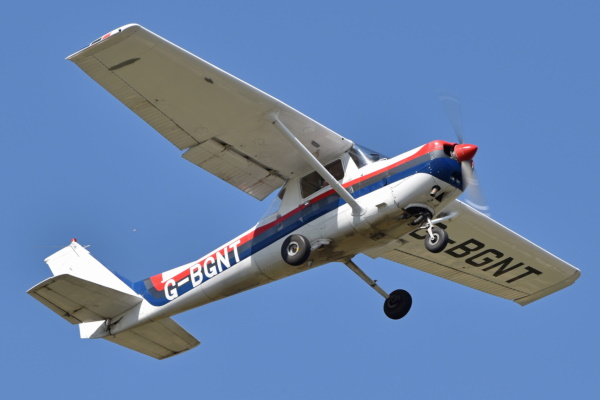
* During World War II, the Cessna company of Wichita, Kansas, produced the twin-engine "T-50 Bobcat" trainer / light utility aircraft, with the firm also working as a second source on the Waco assault glider, and as a subcontractor for other aircraft manufacturers.
At the end of the conflict, there was a belief that the light civil aircraft market was going to boom, and so a number of manufacturers developed new light aircraft designs. Cessna came up with the "Model 140", which would be the ancestor of the company's postwar prop-single designs. The Model 140 was a two-seat aircraft with a high braced wing, featuring wing struts, and "taildragger" fixed landing gear.
The Model 140 went out of production in 1951. In the middle of the decade, the company decided to come up with a new two-seater. The initial flight of the prototype of the "Model 150" was on 12 September 1957, with production beginning the next year, the initial version being for the 1959 model year. The Cessna 150 had the same general configuration as the Model 140 -- with a high braced wing, side-by-side seating on a bench seat, and a flat-four air-cooled engine -- but it had tricycle landing gear, with a steerable nose wheel. Spats were, it appears, optional.
The Cessna 150 also had a revised wing, all the flight surfaces having squared-off instead of rounded tips, and had Fowler flaps instead of wing flaps. Flight controls were conventional -- ailerons, single-piece flaps, elevators, rudder, trim tabs -- and manually actuated. Even the flap was manually actuated, using a lever between the seats. The initial model, sold for the 1959 product year, had a Continental O-200 flat-four air-cooled engine with 75 kW (100 HP), driving a two-blade fixed-pitch propeller. There were fuel tanks in the wings, maximum capacity being 98 liters (26 US gallons), though usable capacity was less than that. Maximum take-off weight (MTOW) was 680 kilograms (1,500 pounds). It was sold with a higher grade of kit as the "Commuter".
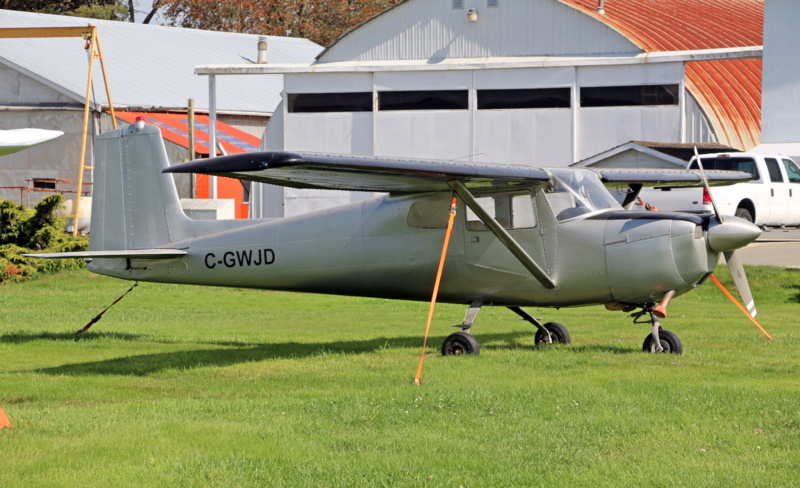
The 1960 Model 150 -- there was no change in designation -- featured an uprated electrical generator. A "Patroller" variant was also introduced, with acrylic windows on the lower doors, long-range fuel tanks, and a message chute for dropping small packages. It was intended for missions such as pipeline inspection.
_____________________________________________________________________
CESSNA MODEL 150M COMMUTER II:
_____________________________________________________________________
wingspan:
10.11 meters (33 feet 2 inches)
wing area:
15 sq_meters (160 sq_feet)
length:
7.29 meters (23 feet 11 inches)
height:
2.59 meters (8 feet 6 inches)
empty weight:
510 kilograms (1,120 pounds)
max take-off weight:
725 kilograms (1,600 pounds)
maximum speed:
200 KPH (125 MPH / 110 KT)
cruise speed:
150 KPH (95 MPH / 80 KT)
take-off run:
420 meters (1,385 feet)
landing run:
330 meters (1,075 feet)
service ceiling:
6,700 meters (22,000 feet)
range:
780 kilometers (420 miles / 485 NMI)
_____________________________________________________________________
The baseline variant was followed by improved variants:
With the "Model 150 Series L", introduced in 1971, Cessna gave up on formal yearly updates, with the Cessna 150L built into 1974. One of the significant visible changes were that Cessna abandoned the company's classic flat spring-steel main gear legs, going to a tubular structure that increased the width across the main gear legs by over 15%, improving ground handling. The tubular gear leg assembly was faired to reduce drag.
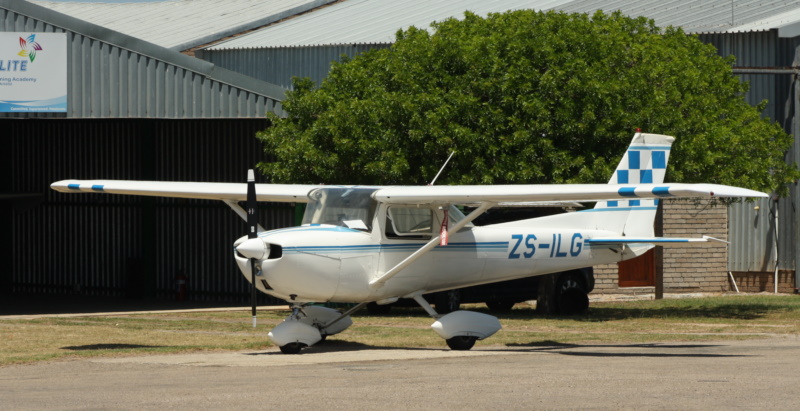
The tailfin forward fillet was also extended forward to almost reach the rear window, this being done mostly for cosmetics; while the landing and taxi lights were moved from the wing to the nose. That gave better illumination, but as it turned out, the heat and vibration on the nose reduced the reliability of the lights. In 1972, the fuel filler caps were improved to provide a better seal, and improved seats were fitted. Lower seats were introduced in 1973 to improve headroom. The only change for 1974 was an improved prop for the A150L Acrobat. Reims built the corresponding "F150L" and "FA150L" variants, with a number of the FA150Ls being powered by the Rolls-Royce Continental O-240-A engine. In addition, a number of "A-150L" machines were built by DINFIA of Argentina -- that firm apparently being closely tied to Reims.
The very last variant of the Cessna 150 was the "Model 150 Series M", introduced in 1975. The most visible change was to increase the height of the tailfin by 15 centimeters (6 inches) to improve crosswind handling, resulting in an increase in tailfin / rudder area of 15%. Inertial-reel seatbelts -- as are normal in modern cars -- were available as an option. The Cessna 150M introduced the "Commuter II" upgrade package, providing enhanced trim and avionics.
The 1976 Cessna 150M featured circuit breakers, replacing the fuses previously used, and also provided a fully-articulated pilot seat as standard; it had been optional on some earlier variants. The 1977 version, the last of the Model 150s, featured a "flap select" switch that allowed a pilot to select a flap position with a flip of a switch, instead of holding on to the switch during flap travel. Reims built equivalent "F150M" and "FA150M Aerobat" variants -- and some Reims FA150Ls were actually to F150M spec.
The US Air Force Academy flying team acquired one Cessna 150L and two Cessna 150Ms for training and competition. These machines were fitted with more powerful Lycoming O-320-E2D engines with 110 kW (150 HP), and were designated "T-51A". Other military users of the Cessna 150, it appears primarily for training, included Burundi, The Congo, Ecuador, Haiti, Ivory Coast, Liberia, Mexico, Paraguay, Somalia, and Sri Lanka. Total production of the Model 150 from all sources was 23,949 aircraft.
* The Cessna 150M wasn't the end of the Model 150 line. The changes in the Model 150 over its evolution had led, to no surprise, to weight creep. Consequently, in 1978, following the end of Cessna 150 production, the company introduced the "Model 152", which was effectively a Model 150M with a Lycoming O-235-L2C engine, producing 80 kW (110 HP), and compatible with 100-octane low-lead (100LL) fuel -- as opposed to more traditional 80/87-octane fuel. The engine drove a two-bladed fixed-pitch propeller. Incidentally, 100LL would eventually become the norm, with Model 150s lingering in service updated to handle it. In 1983, the engine was updated to the O-235-N2C variant, which eliminated some fouling problems. The Model 152 also had flap angle limited to 30 degrees, compared to the 40 degrees on the Model 150, and MTOW increased by 4%, to 755 kilograms (1,670 pounds).
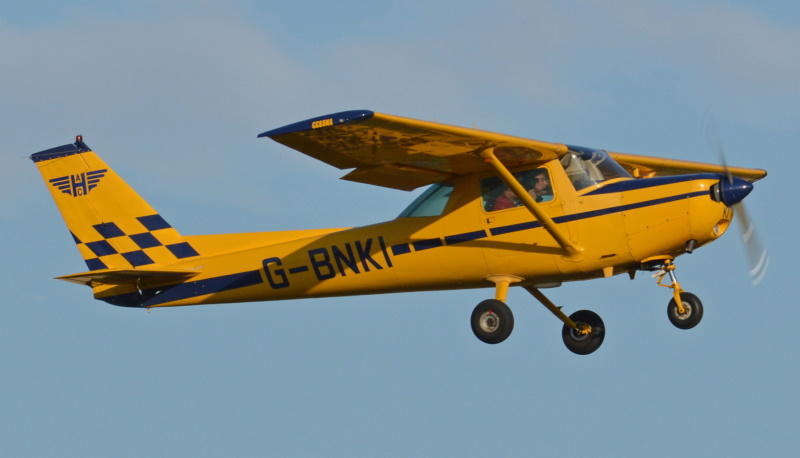
The baseline Model 152 could be upgraded to a "II" package with better avionics and trim, or a "II Nav Pac" upgrade with even more avionics. The dual-control trainer version was the "Cessna 152T". From 1979, the Cessna 152 had a split cowling that eliminated the need to remove the prop to pull the cowling. There was also an "A152 Aerobat" version for aerobatic use.
Reims built the baseline Model 152 as the "F152", and the A52 Aerobat as the "FA152". All production came to a halt in 1986, when Cessna decided to give up manufacturing its piston singles, citing lawsuits as the primary reason. A total of 7,584 Model 152s of all variants had been produced to that time. Government users of Model 152 trainers included Argentina, Bangladesh, Bolivia, Botswana, Gabon, Lesotho, and Mexico.
Although the Model 150 / 152 is long out of production, with so many built, plenty of them are still flying. Many different sorts of updates are available, including engine updates, aerodynamic improvements, and modernized avionics -- such as Garmin glass cockpits, or some partial glass cockpit. There's even, surprisingly, a taildragger conversion, with better short-field performance.
BACK_TO_TOP* Cessna followed up the postwar introduction of the two-seat Model 140 with "Model 170", which was much the same aircraft, but enlarged to provide four seats. Like the Model 140, the Model 170 was a taildragger. In early 1955, Cessna flew the "Model 170C", which had larger elevators and a more angular tailfin than earlier aircraft in the series. The Cessna 170C appeared satisfactory, but then company officials decided to change it to fixed tricycle landing gear. It performed its first flight in its trike form on 12 June 1955.
_____________________________________________________________________
CESSNA MODEL 172F:
_____________________________________________________________________
wingspan:
10.86 meters (35 feet 8 inches)
wing area:
16.16 sq_meters (174 sq_feet)
length:
8.2 meters (26 feet 11 inches)
height:
2.68 meters (8 feet 10 inches)
empty weight:
565 kilograms (1,245 pounds)
max operating weight:
1,045 kilograms (2,300 pounds)
maximum speed:
225 KPH (140 MPH / 120 KT)
cruise speed:
210 KPH (130 MPH / 115 KT)
service ceiling:
4,000 meters (13,100 feet)
range:
1,030 kilometers (640 miles / 555 NMI)
_____________________________________________________________________
The new variant was actually certified as the "Cessna Model 172", though it was still certified on the basis of the Cessna 170 type certificate. Indeed, the Cessna 172, except for the tricycle landing gear, still looked much like the Model 170, with the straight rear fuselage -- no rear window -- though the Model 172 had a straight tailfin, as compared to the rounded tailfin of the Model 170.
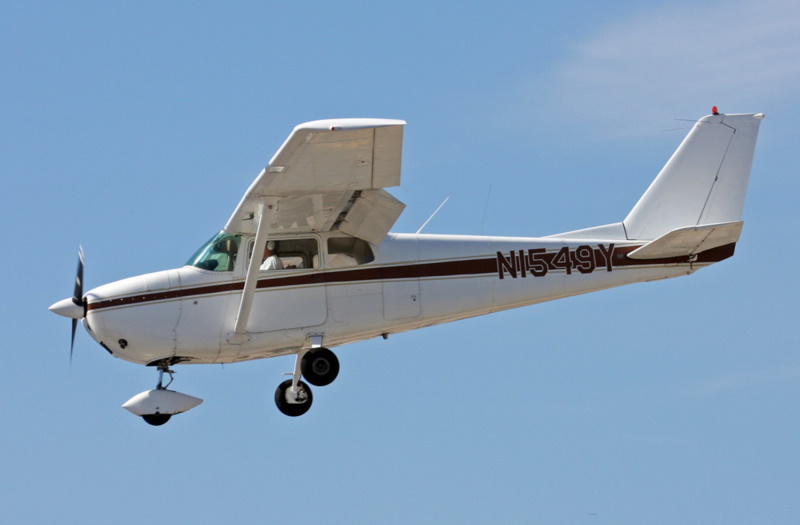
The general configuration of the Cessna 172 was very much like that of the Cessna 150: high braced wing, twin forward-hinged doors, tricycle landing gear with steerable nose wheel, same flight-control surface arrangement, and fuel tanks in the wings. The baseline Cessna 172 was powered a Continental O-300 six-cylinder, air-cooled engine with 110 kW (145 HP), driving a two-blade fixed-pitch prop, and had an MTOW of 1,000 kilograms (2,200 pounds). The four seats were somewhat misleading: the Cessna 172 was adequate for two medium-sized adults and two small children, with modest baggage, but loading it up much beyond that was problematic.
In any case, it was a big hit, with thousands sold. Improved variants followed:
Along with equivalents of Cessna Model 172 variants, Reims also produced the "FR172 Reims Rocket", which was a Cessna 172 with a peppy Continental IO-360-H(B) engine providing 160 kW (210 HP), driving a constant-speed propeller. It was produced from the late 1960s to the mid-1970s, with subvariants from the "FR172E" to the "FR172J", in parallel with the Cessna 172 variants.
Cessna decided the Rocket was a good idea, and so introduced the "R172K Hawk XP" in 1977, with Reims building it in parallel. It was powered by a Continental IO-360K, later IO-360K, engine with 145 kW (195 HP) driving a two-blade, constant-speed propeller. The Hawk XP was built through 1981. Users didn't generally feel the Rocket / Hawk XP's improvement in performance was worth the additional cost -- but it was regarded as a better floatplane variant, the standard Cessna 172 not having enough power to handle floats very well.
* According to the official story, Cessna gave up on building single-engine light aircraft because litigation had made them prohibitively expensive. There has been argument over whether that was the full story -- but in any case, following the passage of laws to reduce liability, in 1996 Cessna put the Model 172 back into production, introducing the "Model 172R". It was powered by a fuel-injected Lycoming IO-360-L2A engine with 120 kW (160 HP), MTOW being 1,110 kilograms (2,450 pounds). It featured considerable update in trim, with better soundproofing, an improved ventilation system, and much refined seats.
The Cessna 172R was followed in 1998 by the "Model 172S Skyhawk SP", with a Lycoming IO-360-L2A engine producing 135 kW (180 HP). The Cessna 172S is the only Cessna 172 variant still in production, with Garmin G1000 avionics and leather seats being standard. Over 44,000 Cessna 172s have been built to date; if it's not the most-produced aircraft in history, it's clearly in the "Top Ten". Of course, thousands of older machines are still in service, with plenty of engine, aerodynamic, and avionics upgrades available.
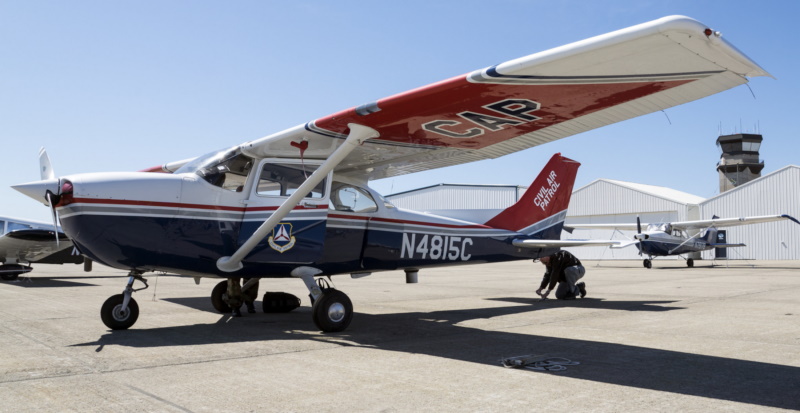
There's been tinkering with turboprop conversions, but only on an experimental basis. In 2007, Cessna announced development of a diesel-powered Cessna 172 using a Thielert engine -- but that project died in 2013, after Thielert went broke. Working from there, Cessna actually introduced a diesel-powered variant, the "Turbo Skyhawk JT-A", in 2014, this machine being powered by a Continental CD-155 diesel engine with 115 kW (155 HP) -- but it was canceled quickly after release, since it cost about twice as much as a Cessna 172 retrofitted with a diesel engine. Cessna also flew a battery-powered Model 172 from 2012, but it was never anything more than an experiment.
* The Cessna 172F was the basis for the "T-41 Mescalero" trainer for the US military. In 1964, the US Air Force (USAF) obtained 211 slightly modified Model 172Fs under the designation of "T-41A" to provide "ab initio" (from the bottom) flight training and screening for pilot candidates. The T-41A went into service in 1965.
The US Army obtained 255 "T-41B" trainers, which used a fuel-injected Continental IO-360 engine with 160 kW (210 HP), driving a constant-speed propeller -- as opposed to the O-300, with 110 kW (145 HP) and fixed-pitch propeller of the Model 712F / T-41A. In 1968, the USAF obtained 52 "T-41C" trainers, which had the IO-360 engine but a fixed-pitch propeller. From 1996, surviving T-41Cs were upgraded to the "T-41D", which had a constant-speed propeller and modernized avionics.
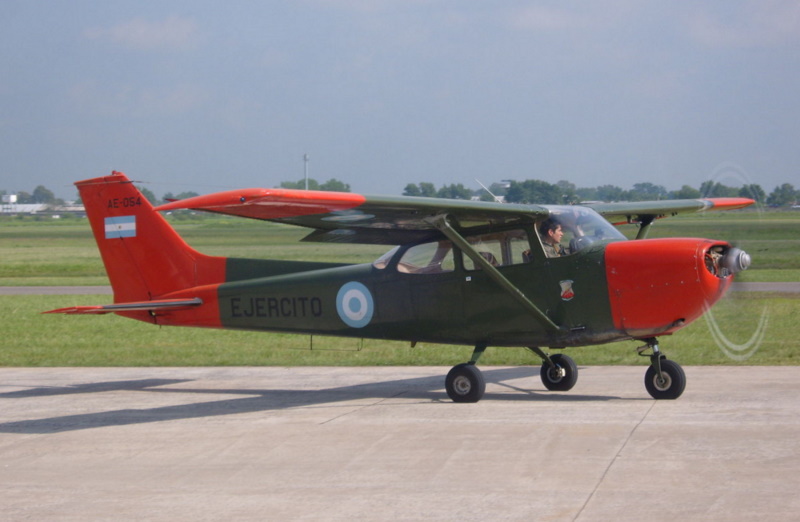
From 1993, the USAF started to phase out the T-41 in favor of the Slingsby "T-3A Firefly". The Firefly ended up being permanently grounded in 1997, after a series of fatal accidents. The Air Force ultimately "farmed out" ab initio training / screening to a private firm. It appears that some of the T-41s were passed on to other nations.
Other government users of the Model 172 or T-41 included Angola, Argentina, Austria, Bolivia, Cambodia, Chile, Colombia, Dominican Republic, Ecuador, El Salvador, Greece, Guatemala, Honduras, Indonesia, Iran, Iraq, Ireland, Laos, Liberia, Madagascar, Pakistan, Paraguay, Peru, Philippines, Saudi Arabia, Singapore, South Korea, South Vietnam, Suriname, Thailand, Turkey, and Uruguay.
BACK_TO_TOP* With the Cessna 172 selling well, the company decided to offer a version with an uprated engine, with the first flight of the "Model 175" on 23 April 1956, and customer shipments in 1958. The Model 175 was a Model 172, powered by a geared Continental GO-300A flat-six engine, with 130 kW (175 HP) -- 20% more powerful than the O-300 used on the Model 172. The reduction gearing system translated an engine running at 3200 RPM to drive a two-bladed fixed-pitch prop running at 2400 RPM. Fuel tank capacity was increased to a maximum of 197 liters (52 US gallons), about a quarter more than that of the Cessna 172, though not all of that was usable. MTOW was increased, to 1,065 kilograms (2,350 pounds), with cruise speed improved by about 18 KPH (11 MPH / 10 KT).
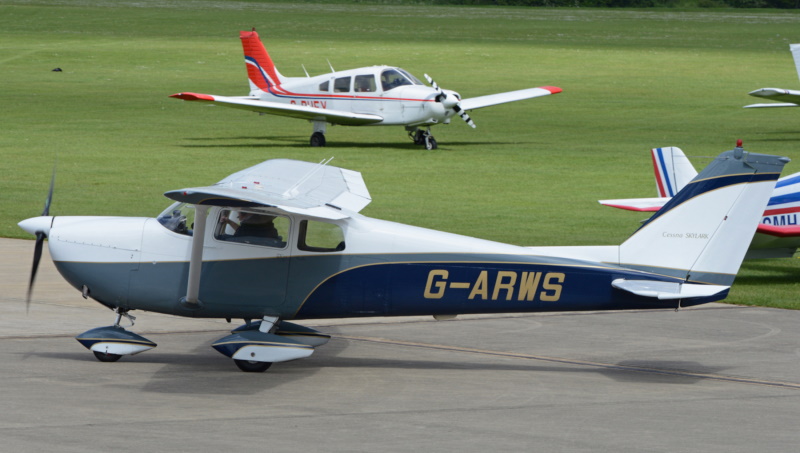
The aircraft was effectively identical to the early Cessna 172 from the firewall back; the only visible difference was a bump in the cowling of later production machines, for the reduction gear. A version with improved kit and trim was sold as the "Skylark"; that effectively became the name for all of the series.
_____________________________________________________________________
CESSNA MODEL 175C:
_____________________________________________________________________
wingspan:
11.02 meters (36 feet 2 inches)
wing area:
16.3 sq_meters (175 sq_feet)
length:
8.08 meters (26 feet 6 inches)
height:
2.72 meters (8 feet 11 inches)
empty weight:
640 kilograms (1,410 pounds)
max operating weight:
1,110 kilograms (2,450 pounds)
maximum speed:
240 KPH (150 MPH / 130 KT)
cruise speed:
165 KPH (105 MPH / 105 KT)
take-off distance (relative to 15 meters / 50 feet):
367 meters (1,205 feet)
landing distance (relative to 15 meters / 50 feet):
370 meters (1,200 feet)
service ceiling:
5,400 meters (17,800 feet)
range:
1,160 kilometers (720 miles / 625 NMI)
_____________________________________________________________________
The baseline Model 175 was followed by improved variants:
As mentioned earlier, the 1962 Skylark model was rebadged as the "P172D Powermatic Skyhawk", in an attempt to dodge the bad reputation acquired by the Skylark. It was identical to the Model 175C, except for some minor tweaks; a handful were built by Reims.
1962 was the last year of Model 175 production, with 2,106 built in all. It is not clear if the P172 is included in this total. None of the Skylarks had an "Omni-View" rear window, Cessna not having introduced that feature before the Model 175 went out of production.
Some sources claim the bad reputation of the GO-300 engine as unreliable wasn't entirely deserved. The problem was that pilots were inclined to run the engine at a low RPM, suitable for a direct-drive engine; that caused excessive vibration, and meant lower speeds that reduced engine air cooling. Some Skylarks still flying have been updated to direct-drive engines.
* In the mid-1960s, Cessna began work on what was seen as a replacement for the Model 172, with the initial flight of the "Model 172J" on 15 July 1966. When dealers found out that Cessna was thinking about dumping the very popular Model 172, they raised hell, with the new design introduced in 1967 as the "Model 177 Cardinal". There would never be a production Model 172J.
The Cardinal was very much along the lines of the Cessna 172, the most visible change being that it had a cantilever wing, with no bracing strut. Ironically, Clyde Cessna had been a pioneer of the cantilever wing back in the 1930s, but the company had given up on it in the interim. The wing also featured a laminar cross-section.
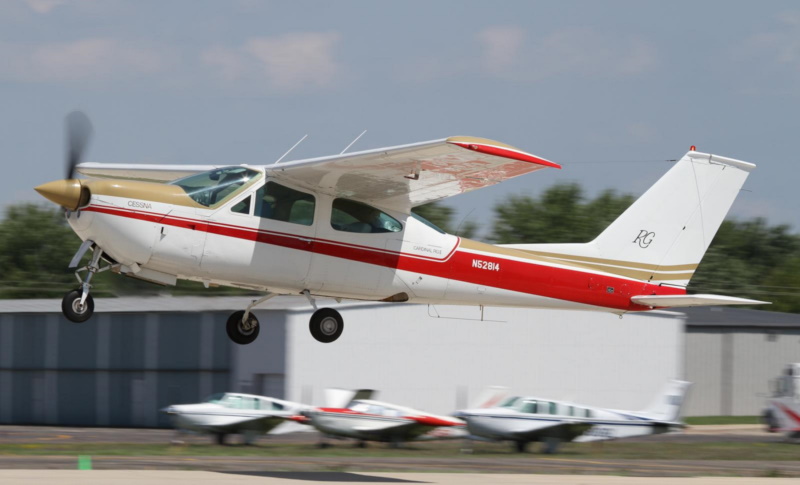
One of the prime motives for getting rid of the struts was to improve pilot field of view. To that end, the wing was also moved back, with the pilot obtaining a raked windscreen with a much expanded field of view, the pilot no longer sitting underneath the wing. That led to center-of-gravity issues, which were partly addressed by switching the six-cylinder Continental engine of the Model 172 for a lighter four-cylinder Lycoming O-320, providing 112 kW (150 HP), driving a twin-blade fixed-pitch propeller. That only partially compensated, so an all-moving tailplane was fitted as well.
_____________________________________________________________________
CESSNA MODEL 177B CARDINAL:
_____________________________________________________________________
wingspan:
10.82 meters (35 feet 6 inches)
wing area:
16.2 sq_meters (174 sq_feet)
length:
8.44 meters (27 feet 8 inches)
height:
2.62 meters (8 feet 7 inches)
empty weight:
680 kilograms (1,495 pounds)
max operating weight:
1,100 kilograms (2,500 pounds)
maximum speed:
250 KPH (155 MPH / 135 KT)
cruise speed:
230 KPH (145 MPH / 125 KT)
service ceiling:
4,450 meters (14,600 feet)
range:
1,120 kilometers (695 miles / 605 NMI)
_____________________________________________________________________
Beyond those changes, the Model 177's general arrangement was much like that of the Cessna 172: all-metal aircraft with tricycle landing gear, featuring optional spats; high wing and swept tailfin; conventional flight control surface arrangement -- elevators, one-piece flaps, ailerons, rudder, trim tabs, manually actuated except for electrically-driven slotted flaps; and a front-hinged door on either side. There was a fuel tank in each wing, each with a maximum capacity of 93 liters (24.5 US gallons) each, realistic capacity being somewhat less.
The Model 177 had cleaner lines than the Model 172, with nice features such as wider and more convenient doors. The initial version of the Cardinal had over-sensitive controls -- it appears it wasn't all that severe a problem, but troubling given that Cessna aircraft were famous for their good handling. The company moved to make fixes, and updated customers at company expense. Nonetheless, the Model 177 didn't sell well, and so improved versions were introduced:
A total of 4,295 Model 177s of all variants was built to end of production in 1978. It was, by Cessna's standards, an "also-ran" -- a nice, pretty aircraft, but expensive. The idea that it was going to replace the Cessna 172 was a delusion.
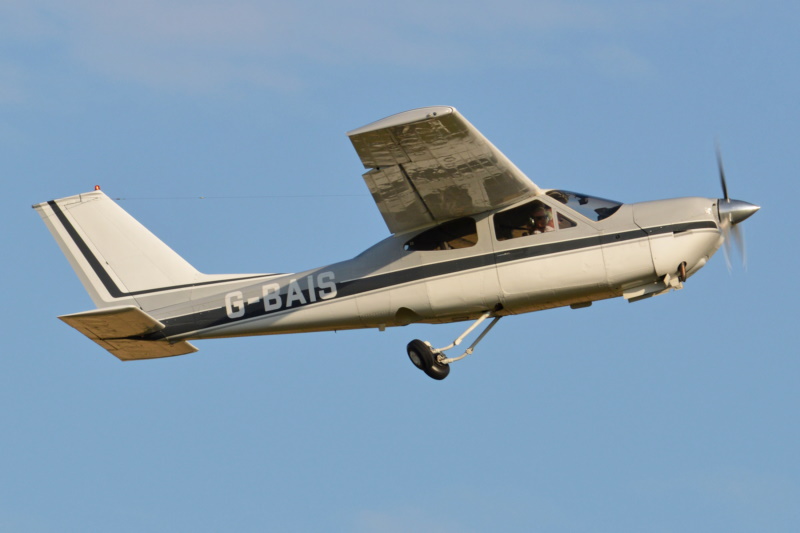
Sources mention that, in 1971, Cessna flew a "Quiet Cardinal", with a rotary Wankel engine driving a wide three-bladed propeller, through a belt-driven reduction gearbox. It also had exhausts as long as the fuselage. It is unclear if the Quiet Cardinal was a company experiment, or built to some requirement -- but in any case, it went nowhere.
BACK_TO_TOP* Although Cessna did return a few piston singles to production, the company would never regain its stature in that domain. Inspired by the "Light Sport Aircraft (LSA)" category introduced by the Federal Aviation Administration, the company announced work on a two-seat "Cessna LSA" in 2006, with a demonstrator taking to the air on 13 October 2006, with the "Cessna 162 Skycatcher" program formally revealed in 2007.
Initial flight of the pre-production prototype, with many changes from the demonstrator, was on 8 March 2008, with the first production aircraft flying in May, and initial delivery in 2009. The Cessna 162 looked like a trimmed-down Cessna 152, with somewhat more modern lines, featuring a high braced wing, fixed tricycle landing gear (spats appear to have been optional), a swept tailfin, and side-by-side seating for two. It differed from other Cessna singles in that the doors hinged upward.
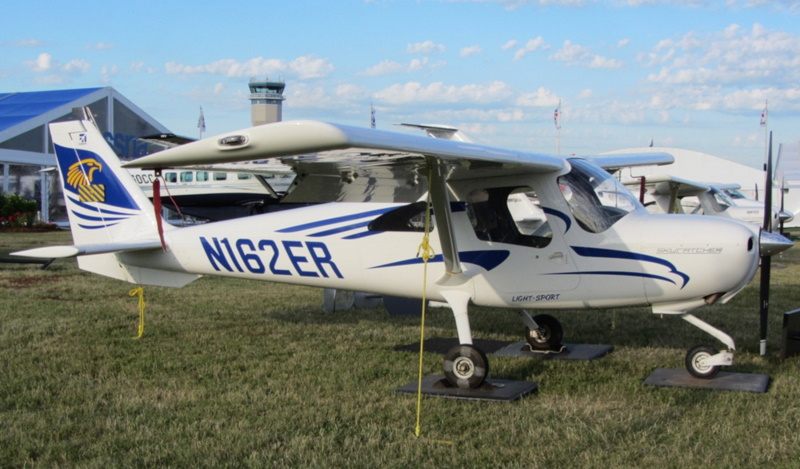
The Cessna 162 was built mostly of aluminum, though it had a fiberglass cowling. Although the demonstrator was powered by a Rotax 912S flat-four liquid-cooled engine with 75 kW (100 HP), the production aircraft was powered by a Continental O-200-D flat-four air-cooled engine, also producing 75 kW (100 HP), and driving a two-bladed fixed-pitch composite propeller. Avionics were arranged around a Garmin G300 system with one display, though two displays were available as an option. An autopilot and a "ballistic recovery system" parachute were also available as options.
_____________________________________________________________________
CESSNA MODEL 162 SKYCATCHER:
_____________________________________________________________________
wingspan:
9.14 meters (30 feet)
wing area:
11.14 sq_meters (120 sq_feet)
length:
6.95 meters (22 feet 10 inches)
height:
2.53 meters (8 feet 6 inches)
empty weight:
375 kilograms (830 pounds)
max operating weight:
600 kilograms (1,320 pounds)
maximum speed:
220 KPH (135 MPH / 120 KT)
cruise speed:
205 KPH (130 MPH / 110 KT)
service ceiling:
1,830 meters (15,500 feet)
range:
870 kilometers (540 miles / 470 NMI)
_____________________________________________________________________
Cessna 162 production was performed by Shenyang Aircraft in China. The type did not prove successful, being more expensive than competitors in the LSA category, but not as capable. In early 2014, Cessna dropped the Model 162 from its catalog, after 192 had been sold. Cessna, having walked away from the light civil aircraft market, would never get it back.
* The Cessna 172, not being a combat aircraft, doesn't have such an exciting service history -- with one major exception. On 28 May 1987, a teenaged German pilot named Mathias Rust flew a rented Reims Cessna F172P to fly from Helsinki into Soviet airspace, without permission, and landed on Red Square in Moscow. It was quite an adventure, but unamused Soviet authorities threw Rust into prison for a year, until the Soviets released him as a good-will gesture. Rust would have occasional run-ins with the law, including an assault and attempted murder, over the following decades.
* This document was derived from the online Wikipedia, articles from the AOPA website, and references to various volumes of JANE'S ALL THE WORLD'S AIRCRAFT. Light aircraft are not over-documented.
* Illustrations details:
* Revision history:
v1.0.0 / 01 jan 19 v1.0.1 / 01 jun 20 / Updated illustrations. v1.0.2 / 01 apr 22 / Review & polish. v1.0.3 / 01 mar 24 / Review & polish. (+)BACK_TO_TOP
